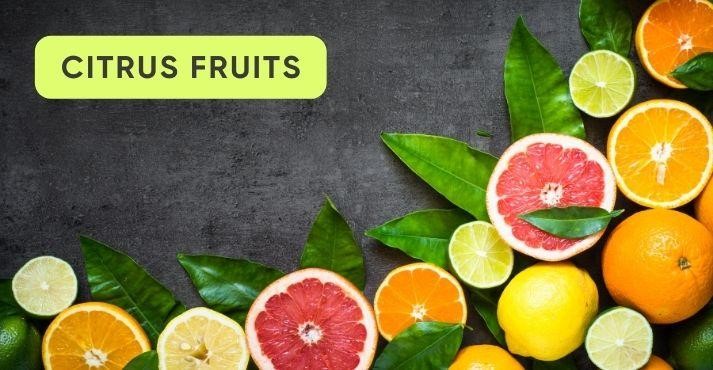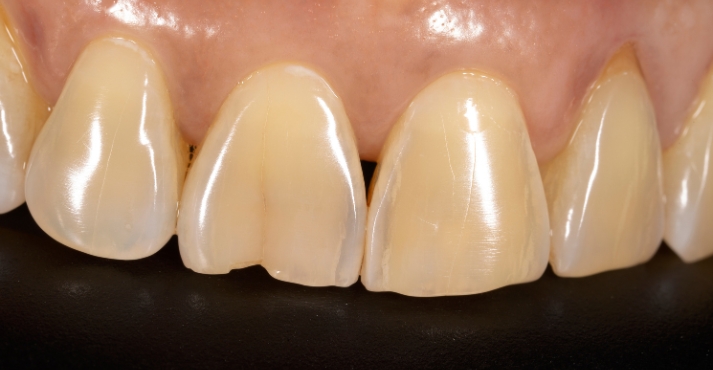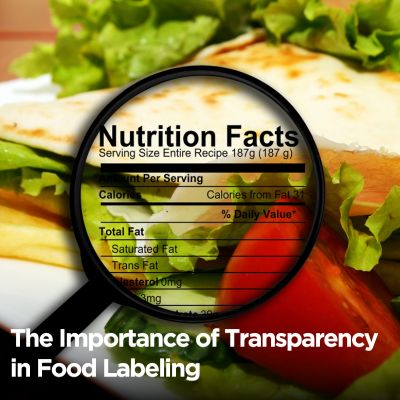There are many reasons why a person may want to avoid eating acidic foods. They damage tooth enamel and stomach lining and trigger various medical conditions.
Acidity in foods is characterized by acidic compounds affecting taste and pH levels. Anything below pH 7 is acidic, while anything above pH 7 is alkaline.
So, when we talk about acidic foods, we refer to the changes in the body’s acidity levels once that food is ingested. When it comes to your diet, understanding acidity is essential for maintaining a healthy diet and overall well-being. The pH level of foods plays a crucial role in impacting various bodily functions.
We will be exploring top 10 acidic foods you should avoid eating.
Understanding Acidity
Acidity refers to a substance’s acidity or alkalinity level, often measured on the pH scale. The concentration of acidic compounds in the food and beverage category determines acidity.
The pH scale ranges from 0 to 14, with 7 being neutral. Foods with a pH below 7 are considered acidic, while those above 7 are alkaline or basic. These foods may contribute to enamel erosion, leading to dental issues like cavities.
The values of pH range from 0 to 14:
- Acidic: 0.0–6.9
- Neutral: 7.0
- Alkaline (or primary): 7.1–14.0
The average pH of the human body is 7.40. When foods are broken down in the body, they can make other compounds that are more or less acidic. While not eating or drinking, your saliva should stay close to the neutral range of 6.5 to 7.5 pH.
Additionally, a diet rich in highly acidic foods may lead to conditions such as acid reflux or heartburn, causing discomfort. Gastrointestinal health can be affected, and individuals with sensitivities may experience stomach irritation.
List of Acidic Foods to Avoid
High acidity in the blood causes adverse chemical reactions in the body. Therefore, we need to know what foods are high in acid to avoid them.
But are some foods more harmful than others? Let’s explore our list of acidic foods to help you understand better and align your diet accordingly.
1. Citrus Fruits

Citrus fruits are one of the most acidic foods, having high acidity, with pH levels typically ranging from 2 to 4. Citric acid is a naturally occurring antioxidant.
The primary acids found in citrus fruits are citric acid and ascorbic acid (vitamin C). While these acids contribute to the fruits’ distinctive tartness and flavor, they can impact dental health and may be a consideration for those with acid sensitivity.
These foods have the highest amounts of naturally occurring citric acid:
Lemons
Lemons are rich in citric acid, a natural source of tartness and flavor. Lemons typically have a pH level of around 2, indicating high acidity. The low pH contributes to their tangy taste.
Oranges
Oranges contain citric acid, contributing to their refreshing taste. Oranges generally have a pH ranging from 3 to 4, making them less acidic but relatively acidic than lemons.
Grapefruits
Grapefruits are known for their citric acid content, providing a slightly bitter and tangy flavor. The pH level of grapefruits is usually around 3, similar to oranges.
Berries
Different berries, such as strawberries, raspberries, and blueberries, contain citric acid. The pH levels of berries vary but generally fall within the range of 3 to 4, depending on the specific type of berry.
2. Tomatoes and Tomato-based Products

Do you know what fruits are acidic?
The answer is tomatoes. They exhibit acidity due to citric acid, malic acid, and ascorbic acid (vitamin C). The tartness in tomatoes enhances their overall flavor profile.
While cooking can reduce the perceived acidity, raw tomatoes are characterized by a pH level of around 4, placing them on the mildly acidic side. The acidity in tomatoes contributes to taste and influences their texture during the cooking.
According to a research study, tomatoes with high acid and low sugar are very acidic, while those with high sugar and low acid content have a bland, sweet taste.
Sauces and Ketchup
Sauces, including ketchup, often contain acidic ingredients such as tomatoes and vinegar. Tomatoes contribute citric and malic acids, while vinegar adds acetic acid. The pH levels in these products typically range from 3.5 to 4.5, indicating moderate acidity.
For some individuals, excessive consumption of tomato sauces and ketchup may pose health challenges. High acidity can contribute to enamel erosion, potentially leading to dental issues. Those with acid reflux or sensitive stomachs might experience discomfort.
3. Processed Foods

Processes are another acidic food to avoid as they are high in sugars, refined grains, and unhealthy fats and tend to be more acidic.
Therefore, processed foods contribute to acidity due to additives, preservatives, and artificial flavorings.
High levels of refined sugars, which are prevalent in many processed foods, can also increase acidity. Additionally, specific processing methods may alter the natural pH balance of ingredients.
Excessive consumption of such processed foods may lead to health issues, including dental problems, digestive discomfort, and an increased risk of conditions associated with high acidity.
Canned Soup
According to the canned food market insights, many canned soups contain added preservatives and flavor enhancers, increasing acidity. Frequent consumption of highly processed soups may contribute to gastrointestinal discomfort and potentially negatively affect digestive health.
Commercial Salad Dressings
Some commercial salad dressings contain vinegar and other acidic ingredients, resulting in moderately acidic pH levels.
Excessive intake of acidic dressings may impact dental health and contribute to calorie-dense diets. Opting for homemade dressings with fresh ingredients can be a healthier choice.
4. Sugary Sweets

Sugar is highly acidic, causes blood sugar spikes, and leads to rapid weight gain. High sugar intake can lead to increased production of acids during metabolic processes. This can disrupt the body’s acid-base balance, potentially causing a more acidic environment.
While the pH of the blood is tightly regulated, excessive sugar intake may influence acidity levels and contribute to health issues, emphasizing the need for maintaining a balanced diet for optimal physiological conditions.
Candies, incredibly sour varieties, may contain citric or tartaric acid, lowering pH to around 3.5. Gummies and chewy candies can cause damage to teeth, increasing the risk of enamel erosion. Chocolate, with a pH of around 5.5-6, is less acidic but can still contribute to dental issues.
Candies
Candies, especially sour ones, often contain citric or tartaric acid, resulting in low pH levels of around 3.5. Citric acid is the most utilized ingredient in those sour gummy bears or worms, lemon drops, and dozens of other assortments.
Acids with higher pH levels provide more sour flavor, and sour confections may contain a mix of several food-grade acids. The acidic nature causes tooth decay and potential digestive discomfort. Limiting acidic candies supports oral health and overall well-being.
Cakes
Cakes with added sugars and sometimes acidic ingredients may have pH levels ranging from 4 to 6. Baking powder and baking soda, white crystalline powders that are naturally alkaline or basic, are commonly used in baking and become activated when combined with an acidic ingredient and a liquid.
Regular consumption can disrupt the body’s acid-base balance, emphasizing the need for moderation in sweet indulgences.
Chocolate
The cocoa powder in chocolate is acidic. While less acidic than candies, chocolate has a pH of around 5.5-6 due to its sugar content. Excessive consumption may contribute to dental issues and disrupt the body’s pH balance.
5. Carbonated Drinks
Carbonated drinks are categorized as highly acidic foods and beverages. Carbonated drinks, including sodas, often have pH levels ranging from 2 to 4 due to added acids like phosphoric acid.
According to a research study, the pH of commercial non-dairy beverages ranges from 2.1 (lime juice concentrate) to 7.4 (spring water).
Commercially available beverages with a pH < 4.0 potentially damage the dentition. Acids are added to beverages and compose a flavor profile, giving the beverage a distinctive taste.
These low pH levels make them highly acidic, causing enamel erosion and tooth decay. The combination of acidity and sugar in these drinks creates harmful bacteria, leading to cavities and gum issues.
Regular consumption of carbonated and alcoholic beverages without proper oral care can significantly increase the risk of dental problems.
6. Coffee and Tea

After water, tea and coffee are the two most commonly consumed beverages worldwide. Coffee is recognized for its higher acidity than tea, with a pH range of 4.85 to 5.10, while tea typically falls between 6.0 and 7.2. This distinction signifies that coffee is more acidic than tea.
The acidity in coffee is attributed to chlorogenic acids, while tea contains tannins and catechins. The acidity in coffee has been associated with potential issues like heartburn, acid reflux, and digestive discomfort for specific individuals.
While moderate coffee or tea intake is generally well-tolerated, those with existing digestive sensitivities may experience discomfort. Also, the acidity in these beverages may influence the gut microbiota.
Coffee
Acids are recognized as a critical contributor to the sensory experience of coffee. Acids give rise to taste and flavor but also function as flavor precursors for other quality descriptors of coffee.
Roasting levels of coffee range from light to medium to dark. Light roasts contain higher acidity. Dark roasts produce a black bean with slight acidity and a bitter roasted flavor.
Tea
According to the trends in the tea sector, tea comes in many types and varieties and is sourced from various countries worldwide.
Here are some of the most common types of teas and their pH levels:
- Green tea – between 8 to 9 pH
- Chamomile/ mint tea – 7 pH
- Black tea – 5 pH
- Iced tea – between 3 to 4 pH
- Rosehip tea – 2 pH
According to research, black tea has a low acid composition, and its consumption leads to only minor and short-lived decreases in pH at the tooth surface.
7. Dairy Products

Dairy products, like yogurt and some cheeses, exhibit acidity due to lactic acid produced during fermentation. While these contribute to flavor, individuals with sensitivities or digestive issues may seek alternatives.
Low-acid dairy options include low-fat or non-fat milk, which is less acidic than full-fat. Dairy alternatives like almond or oat milk naturally have lower acidity and may suit those seeking dairy-free options.
Additionally, lactose-free dairy products can be less acidic, offering a gentler option for individuals with lactose intolerance. Balancing dairy consumption and exploring alternatives ensures diverse choices for those looking to manage acidity in their diet.
8. Spicy Foods

Spicy foods are highly acidic foods. The capsaicin compound responsible for spiciness may stimulate acid production in the stomach, leading to acid reflux or heartburn.
Everyday spicy dishes like chili, hot wings, and curry contain chili peppers, garlic, and onions, which can exacerbate acidity. The combination of intense flavors and potential stomach irritation makes moderation essential for those prone to digestive discomfort.
Balancing spicy foods with non-acidic components and opting for milder versions of dishes can help individuals enjoy these flavors without causing undue acidity-related issues.
Spicy Chilli
It is a classic dish with ground meat, beans, and a flavorful blend of spices, including chili powder and cayenne pepper. The pH level of spicy chili can vary based on ingredients but tends to be on the acidic side, often below 5, due to acidic components like tomatoes.
Hot Wings
Chicken wings coated in a fiery sauce, often a combination of hot sauce, butter, and various spices, delivering intense heat. The acidity in hot wings comes from ingredients like hot sauce, which typically has a low pH.
Spicy Curry
A staple in many cuisines, curry is a dish with a spicy kick, featuring a blend of aromatic spices, chili peppers, and often coconut milk or tomatoes.
Spicy curry dishes can have varying pH levels, often influenced by acidic components like tomatoes or yogurt, resulting in a moderately acidic profile, typically below 6.
9. Alcoholic Beverages

Alcoholic beverages exhibit acidity primarily due to fermentation, producing organic acids. The pH levels can vary across different drinks; for instance, beer generally ranges from 4 to 6, while wine may range from 3 to 4.5.
Excessive alcohol consumption can contribute to digestive issues, including acid reflux. Moderation is crucial to mitigate these effects. Alternatives such as lower-alcohol beverages, like light beers or spritzers, may be mild on the digestive system.
Also, the trends in the beer industry indicate that consumers seek healthy alcohol drinks as an alternative to higher pH levels. Also, non-alcoholic options, such as mocktails or alcohol-free beers, provide alternatives without the potential acidity associated with alcoholic beverages.
10. High-Fat Foods

High-fat foods are also considered high-pH foods that lead to acidity in the body, often due to their impact on digestion. Foods rich in saturated fats, such as fried foods, fatty meats, and particular dairy products, may increase stomach acid production, potentially causing acid reflux or indigestion.
For example, high-fact and acidic foods such as burgers, creamy sauces, and deep-fried snacks. Opting for alternatives like lean proteins, whole grains, and plant-based fats can help reduce acidity.
Foods like avocados, nuts, and olive oil provide healthy fats without the same potential for digestive discomfort. Balancing the intake of high-fat foods with nutrient-dense alternatives supports digestive and metabolic health.
Health Implications of High Acidic Food Intake
Acidic foods can lead to stomach discomfort, heartburn, and even tooth decay. Higher or lower consumption of acidic or alkaline foods may or may not impact blood pH levels.
Here are some of the most common health implications of higher acidic food intake.
1. Acid Reflux and Heartburn

High acidity can trigger acid reflux and heartburn by causing the lower esophageal sphincter to relax, allowing stomach acid to flow back into the esophagus. This irritation can lead to the burning sensation of heartburn.
Tips for managing acid reflux and heartburn:
- Eat smaller, more frequent meals.
- Avoid acidic and spicy foods.
- Maintain a healthy weight.
- Elevate the head during sleep.
- Refrain from lying down immediately after meals.
- Consider lifestyle changes.
- Consult a healthcare professional if issues persist.
2. Dental Health

Acidic foods, like citrus fruits, sugary sweets, and carbonated sodas, can contribute to enamel erosion and tooth decay.
The acids weaken the protective enamel layer, making teeth more susceptible to cavities. Regular consumption of acidic foods without proper oral hygiene can compromise dental health.
Here are some critical tips for oral care:
- Brush teeth twice a day
- Use fluoride toothpaste
- Floss daily
- Rinse with mouthwash
- Replace toothbrush every 3-4 months
- Consider a tongue scraper
3. Gastrointestinal Issues
High acidity in the digestive system can lead to conditions like acid reflux and heartburn. Excessive acid production may irritate the esophagus, causing discomfort and potentially leading to digestive issues such as indigestion and gastritis.
Potential gastrointestinal problems may include indigestion, acid reflux, gastritis, and irritable bowel syndrome (IBS). High acidity in the digestive system can cause these issues, causing discomfort, inflammation, and disruption of normal digestive processes.
Tips for Managing Acidic Food Intake
Eating the right food may work wonders in controlling acid reflux. You must have a balanced diet plan and consume food in moderation, ensuring portion control.
Balanced Diet Suggestions
A balanced diet is a nutritional approach that involves consuming various foods appropriately to meet the body’s needs for essential nutrients.
It includes a mix of carbohydrates, proteins, fats, vitamins, minerals, and adequate hydration. The requirements may vary based on individual factors such as age, gender, activity level, and overall health goals.
Tips on maintaining a balanced diet with reduced acidic foods.
- Include a variety of fruits and vegetables
- Opt for lean proteins
- Choose whole grains
- Limit processed and sugary foods
- Moderate dairy intake
- Drink plenty of water
- Use herbs and spices for flavor
- Consider plant-based alternatives
- Be mindful of portion sizes
Moderation and Portion Control
Moderation refers to consuming various foods in appropriate amounts to maintain overall health. Portion control involves managing the size of food servings to ensure they align with nutritional needs. It helps prevent overeating and supports weight management.
Here’s how moderation and portion help manage acidic food intake:
- Prevents Acid Reflux: Controlling portion sizes and moderating acidic food intake can reduce the risk of acid reflux.
- Maintains Digestive Health: Moderation helps maintain a balanced pH in the stomach, preventing digestive discomfort.
- Protects Dental Health: Limits the exposure of teeth to acids, reducing the risk of enamel erosion and dental problems.
- Supports Weight Management: Prevents excessive calorie intake, promoting a healthier body weight and reducing the risk of obesity-related issues.
- Balances Nutrient Intake: Inclusion of a variety of nutrients while avoiding excessive consumption of potentially acidic foods.
Acidic Foods You Should Avoid Eating (FAQs)
Are eggs acidic?
Eggs are considered slightly acidic. The pH level of an egg can vary, but it is generally around 7 or slightly below, indicating a slightly acidic to neutral nature. The acidity in eggs is primarily due to certain acidic compounds, including amino and fatty acids.
Are grapes acidic?
Yes, grapes are considered to be mildly acidic. The acidity in grapes is primarily due to natural acids, such as tartaric and malic acid. The pH level of grapes typically ranges from about 3.3 to 4.5, depending on the grape variety and ripeness.
Is yogurt acidic or basic?
Yogurt is generally considered to be slightly acidic. The pH level of yogurt can vary, but it typically falls within the range of 4 to 4.6.
The acidity in yogurt results from the fermentation process, during which bacteria (typically Lactobacillus bulgaricus and Streptococcus thermophilus) convert lactose (a sugar found in milk) into lactic acid.
Conclusion
Being mindful of your diet is essential for maintaining health, particularly when it comes to acidic foods. While some acidic foods offer nutritional benefits, excessive consumption may lead to various health issues.
Limiting intake of highly acidic foods like citrus fruits, sodas, and certain spicy dishes is recommended. Moderation and balance are key—opt for a diverse range of foods, incorporate alternatives, and pay attention to portion sizes.
Prioritizing oral hygiene, staying hydrated, and considering lower-acid options contribute to well-being. Therefore, you need to manage your diet to promote and minimize the potential adverse effects of acidic foods.





























